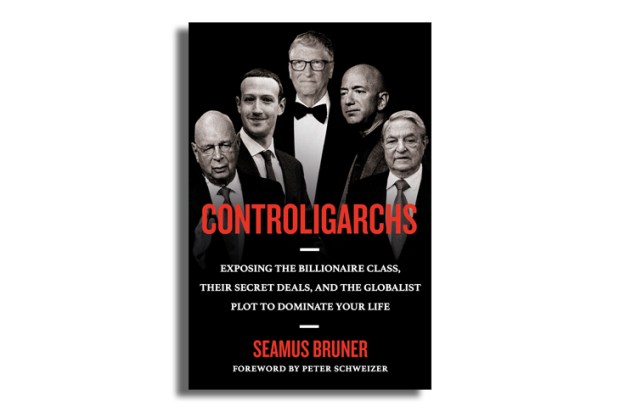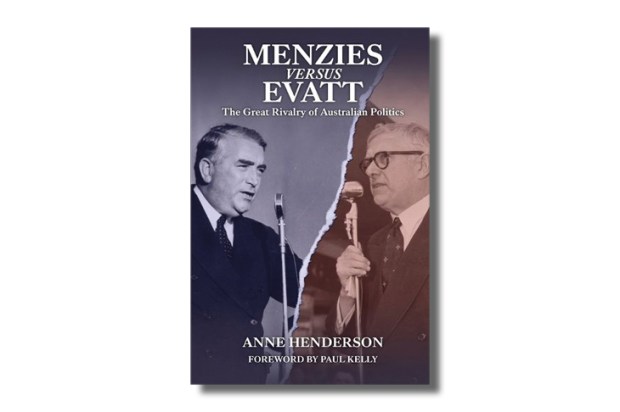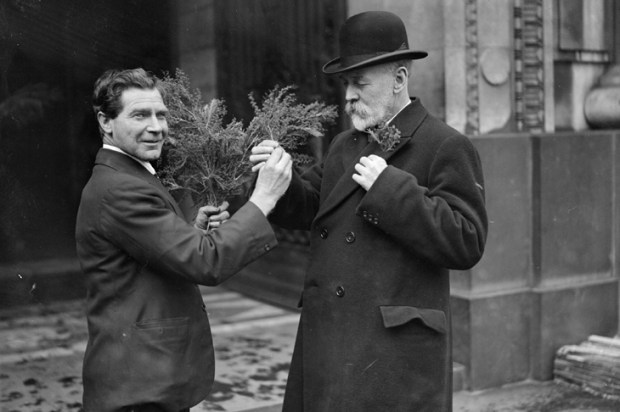Some of us habitually quote Orwell’s correct comparison of producing first-person prose to ‘dosing yourself with some … very deleterious and very habit-forming drug.’ But concerning Daniel Mannix, first-person prose is inescapable. Though His Grace died 52 years back, the Mannix Wars still echo to (Wilfred Owen’s simile, of course) ‘the sob and clubbing of the gunfire.’ I write as a second-generation, although minor, ex-activist in B.A. Santamaria’s Movement. Born (1961) to non-Christian parents in the still-monarchist NSW of Joe Cahill and Cardinal Gilroy, I arrived at first-name terms with Santamaria not because of, but despite, Mannix. Upon a congenital distaste for confusing Rome with Dublin, I superimposed in adulthood a belief that personality cults are best left to Tehran and Pyongyang. A 1977 chronicle of Mannix surrealistically asserted that the recommendation to avoid hero-worship constitutes ‘one of the absurdest dicta ever uttered.’ Chesterton showed greater wisdom, calling hero-worship ‘devil-worship softened by a touch of monkey-worship.’
Any reader not yet affronted by this critique should acquire the two indispensable books here noted. They complement each other as a key complements a lock: Connor Court’s, an assemblage of primary sources; Text’s, as near to a definitive life-and-times as Mannix’s own scanty archives permit.
Among living Australian biographers, only Philip Ayres matches Brenda Niall for painstaking research serving narratives at once spirited and judicious. Dr Niall lets Mannix take centre stage, a feat beyond the lately deceased Jim Griffin, whose own ostensibly Mannix-related 2012 diatribe is one 400-page guffaw at pre-1960s Catholics for not reaching Griffin’s own Himalayan altitudes of nihilism.
Already much discussed have been Dr Niall’s revelations about Billy Hughes’s daughter Helen – impregnated out of wedlock – and the covert, deep practical compassion which Mannix showed the family. Like a super-diligent Miss Marple, Dr Niall ignores nothing. Staunchly fair-minded, she also notes downright corruption by individual Movement operatives. The Movement-backed state secretary in one blue-collar union embezzled his way into jail: a godsend, naturally, to communists. These crimes I now find disappointing but predictable. Any 10-minute conversation with the allegedly ‘Machiavellian’ Santamaria revealed how often his circumstances anticipated Pope Benedict XVI’s 2005 complaint: ‘My authority ends at that door.’
The Franklin-Nolan-Gilchrist collection concentrates on Mannix’s and his contemporaries’ own copious words, with admirable but terse linkages, plus a longer, likewise admirable, pretty grim afterword (chillingly titled ‘Back of House’) on various clerical scandals. We are afforded several proofs of Mannix’s unobtrusive piety, his preparedness to hear confessions for hours. But for me, two letters in the collection stand out.
W.T. Cosgrave, Irish Taoiseach 1922-32, is frequently considered a bland middle-management type alongside Mannix’s beau idéal De Valera, let alone Michael Collins. Yet Cosgrave’s 1923 communiqué to Mannix excoriates its recipient with stylishly, temperately verbalised rage. The other amazing – vulgarian Brits would call it ‘gobsmacking’ – missive went from the Archbishop to Pope Pius XII, after the Vatican’s 1957 verdict curbing the Movement. That ‘cafeteria-Catholicism’ which Santamaria rightly deplored, the nonagenarian Mannix prefigured, through his insolence towards the Holy Father. Honeyed insolence, yes, but insolence even so.
The Richelieu of Raheen could be a curiously weak prophet. Three times he overlooked the Law of Unintended Consequences (once is a misfortune, thrice seems like carelessness). He backed massive post-1945 immigration from Continental Europe, though this automatically diluted local Hibernian sentiment. He demanded State Aid, though it inexorably lavished as much government funding on heretical teachers as on orthodox ones. The obsessive Mannix campaign for university attendance, by almost every Mass-attending youngster not actually acephalic, exacerbated – indeed, arguably caused – the national inundation of campuses by hordes of social-climbing teenage semi-literates who, far from having mentally or morally earned undergraduate life’s privileges, remained dubiously housebroken post-crèche.
Over decades, our Catholic students’ apostasy rates have exceeded even Europe’s, never mind America’s. For that, Mannix must share the blame (unless we believe Marxist baloney about good intentions offsetting evil outcomes). The phrase ‘lay Catholic action,’ as routinely used by Mannixism’s foot-soldiers, had a specific if dull meaning. In 2015 the phrase amounts to ‘every layperson can write theology, no layperson need clean toilets.’ (At least Mannix-era theology assumed sanity. Dr Niall reminds us that the Movement called its Melbourne HQ ‘Belloc House.’ Hands up any non-homeschooled Australian Catholics under 40 who recognise Belloc’s name.)
Staying-power for Mannixism presupposed: (a) near-infinite public acceptance of each diocese as its own de facto papacy; (b) near-illimitable Sinn Fein markets; (c) near-endless supplies of willing, chaste padres. Among these, (a) perished through the West’s post-Vatican-II cultural revolution, culminating in the Australian intelligentsia’s ravenous appetite for Charlie Hebdo; (b) ended when Northern Island’s Troubles abated; (c) could not survive the 21st century’s retrospective, international sex-abuse cataclysm. If the damage this cataclysm has inflicted on the priesthood’s societal standing were less nightmarish, it would evoke a Joe Orton farce. (‘We once had a reputation for integrity. That is a mistake which has been rectified.’) Ages hence, historians will argue over how preordained the ALP/DLP split was; whether Mannix lastingly strengthened or accidentally enfeebled his flock; and whether, in today’s Australia, identifiable Catholic dogma – as distinct from mere trendy Girl-Power misattributing of the Magnificat to Anne Henderson – can even exist. One fact, nevertheless, these volumes render undeniable. For all his debonair flattering of literati, Mannix comprehended that ‘if you run the circus, you must crack the whip.’ When a single current archiepiscopal officeholder perceives that truth, it’ll hog the 6PM TV news from Adelaide to Zeehan.
Got something to add? Join the discussion and comment below.
Get 10 issues for just $10
Subscribe to The Spectator Australia today for the next 10 magazine issues, plus full online access, for just $10.
R. J. Stove lives in Melbourne and underwent Catholic baptism in 2002.
You might disagree with half of it, but you’ll enjoy reading all of it. Try your first month for free, then just $2 a week for the remainder of your first year.













Comments
Don't miss out
Join the conversation with other Spectator Australia readers. Subscribe to leave a comment.
SUBSCRIBEAlready a subscriber? Log in